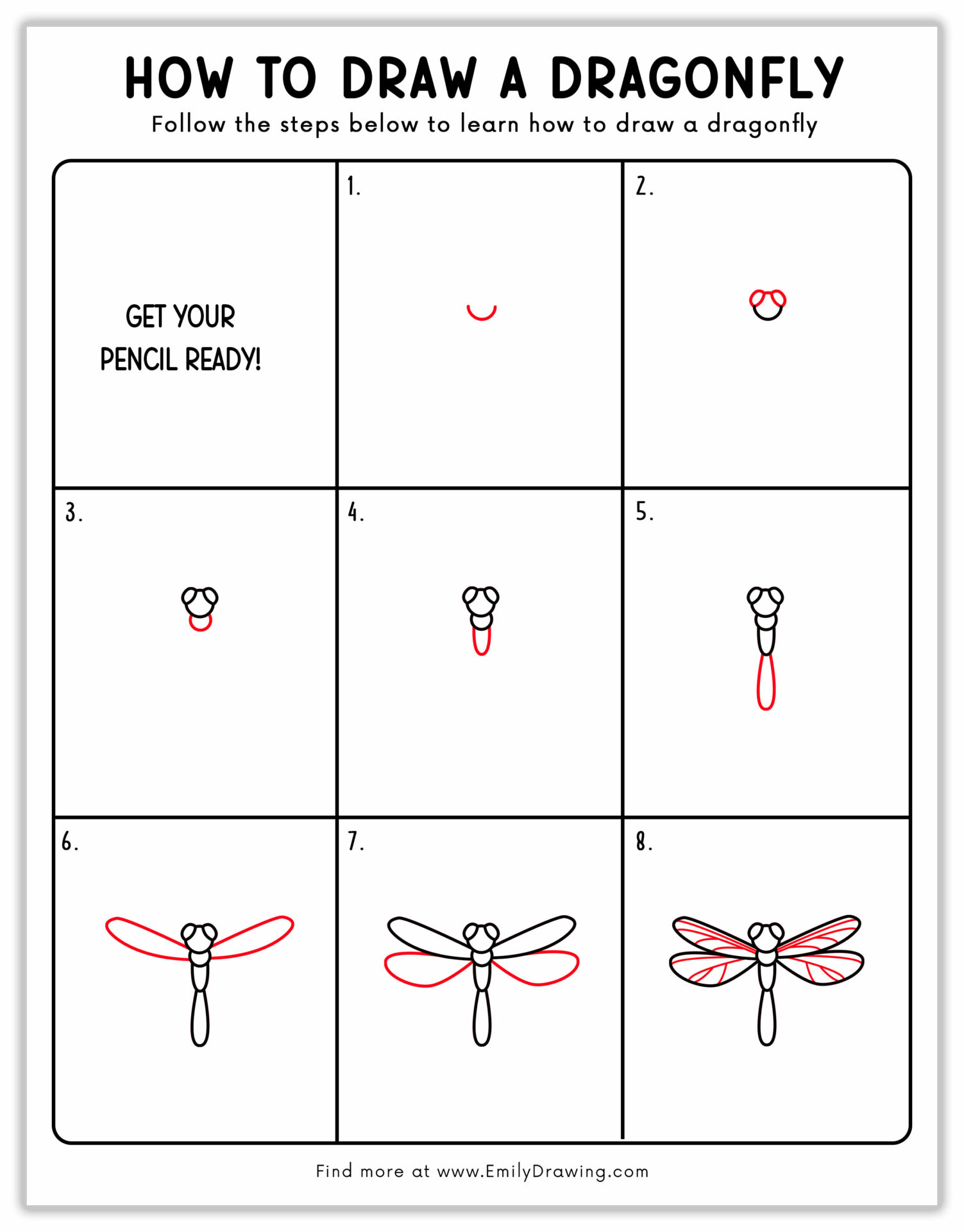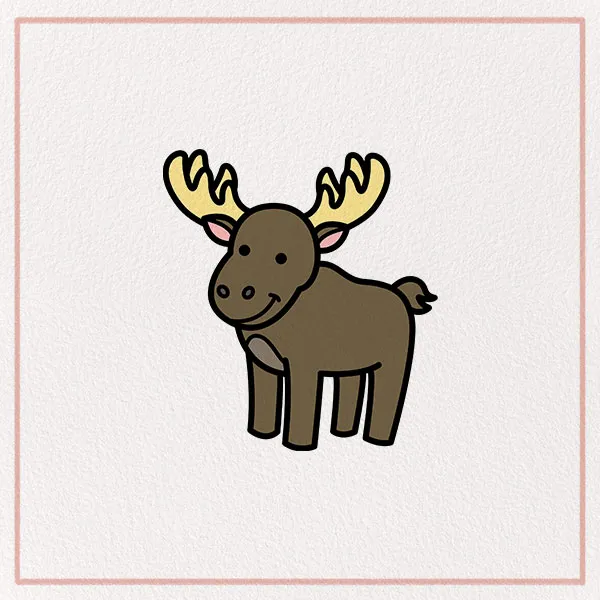Hello, and welcome to another tutorial by Emily Drawing! Today’s tutorial is all about drawing the dragonfly! We’ll go through nine easy steps to draw this beautiful flying insect.
A dragonfly’s size depends on its species. One of the smallest is the Scarlet Dwarf Nannophya pygmaea, which is found in East Adia. This species measures 15 millimeters long, and it has a wingspan of around 20 millimeters.
On the other hand, the Golden-Ringed Dragonfly has the longest body of British dragonflies, measuring at 8.6 centimeters. Meanwhile, the Central American Megaloprepus coerulatus has a wingspan of around 19 centimeters. The Emperor dragonfly is the largest species in Europe, with a wingspan of about 104 millimeters.
Finally, the common darter measures 37 to 41 millimeters. It’s one of the most common dragonflies in Europe, and it’s native to Eurasia.
It’s time to get started on the tutorial for drawing a dragonfly. Grab your colored pencils or markers, and learn how to draw this jewel-like insect.
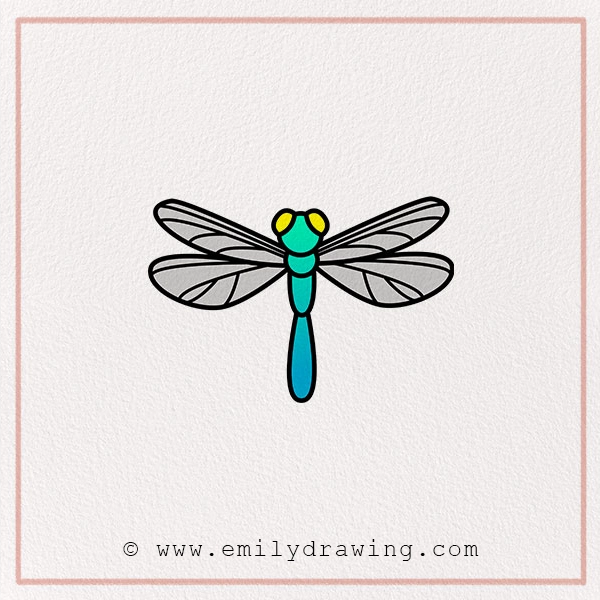
Materials:
- a piece of paper
- a pencil for the guiding lines and sketching
- an eraser
- a black Sharpie or a pen for the outlines
- markers or colored pencils for coloring
- our printable drawing guide (Join my Email List below to get this Tutorial)
Here are my RECOMMENDED Art Supplies!
- Crayola Coloring Set (140 Pieces – Mega Value!)
- 24 Colored Crayon Set
- A4 Printer Paper
- Crayola Coloring Pencils
- HP Home Printer with Instant Ink!
Time needed:
15 minutes.
How to Draw a Dragonfly — Let’s get started!
Step 1 – Draw The Bottom of The Dragonfly’s Head
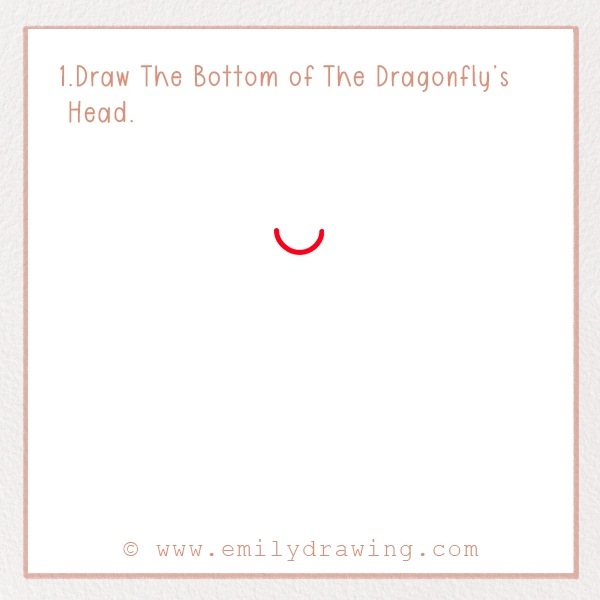
Start by drawing the bottom of the dragonfly’s head, which is just a curved line. Without the rest of the body, it just looks like the bottom of a circle. It also looks like a smile, if you want to take an even more fun approach at this tutorial.
Step 2 – Draw The Top of The Dragonfly’s Head and Antenna
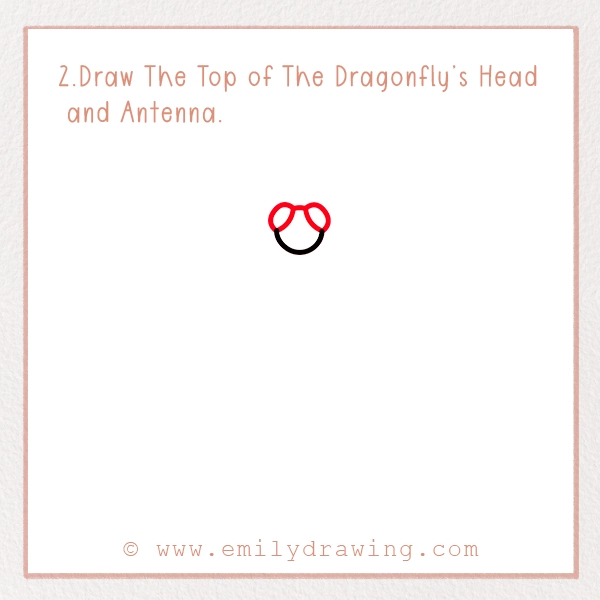
The second step is to draw the top of the dragonfly’s head and antenna. Start by drawing the horizontal ovals as the antenna, which you’re looking at from the top. Did you know that dragonflies use their antennas to measure the speed and direction of the wind? This helps them to evaluate and plan their flight.
Step 3 – Draw The Dragonfly’s Neck
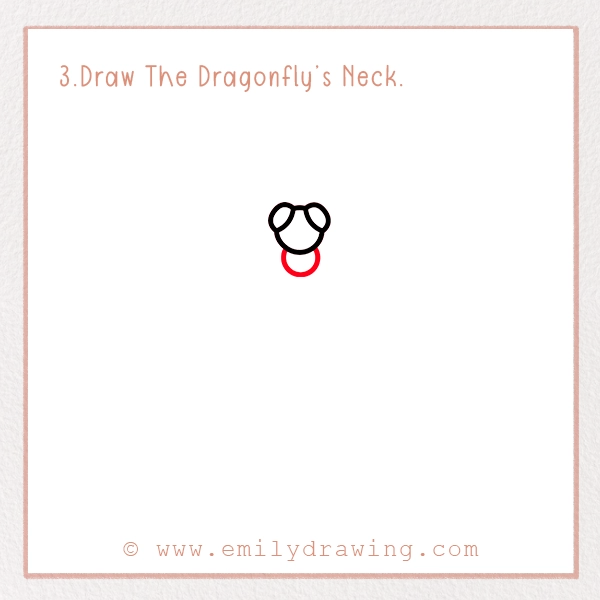
Next, you’ll draw the dragonfly’s neck, which is just a horizontal oval at the bottom of the head. While this is a simple step, it’s also an important one because it’ll connect the rest of the body to the dragonfly’s head.
Step 4 – Draw The Dragonfly’s Thorax
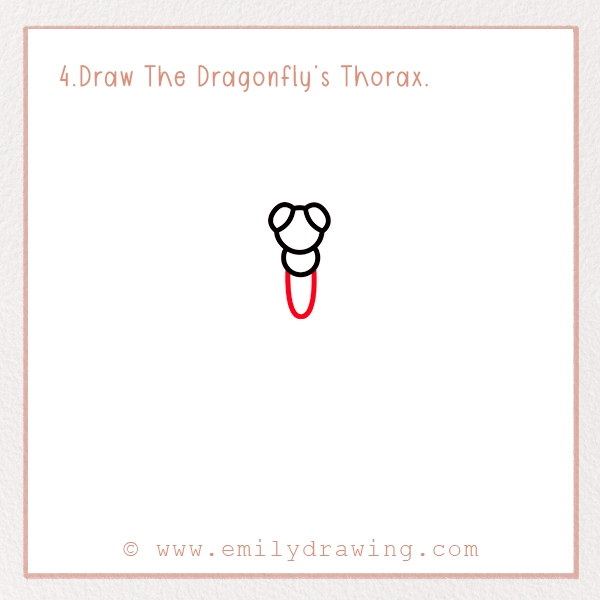
The next step is to draw the dragonfly’s thorax, which is a rounded, narrow shape. The thorax is one of the most important parts of the dragonfly’s body. In fact, it’s the command center for the muscles. Dragonflies use the thorax to control their head, wing, and leg movements. It’s one of the most important parts of the
Step 5 – Draw The Dragonfly’s Abdomen
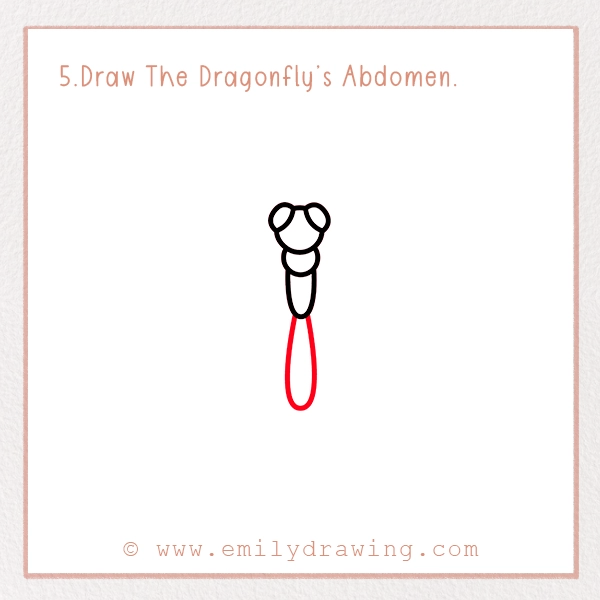
Now, you’ll draw the dragonfly’s abdomen. It’s a similar shape to the thorax but slightly longer. The abdomen has several uses, from reproduction to performing the obelisk posture. The obelisk posture keeps dragonflies from overheating in the sun.
Step 6 – Draw The Dragonfly’s Forewings
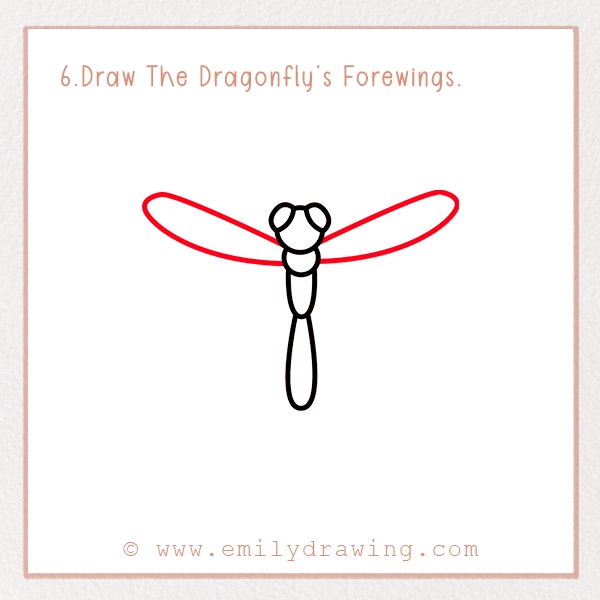
Dragonflies have two pairs of wings, and you’ll draw the forewings for this step. When looking at the tutorial, you’ll notice these are the top wings. Interesting fact: Both pairs of wings have a set of muscles, allowing them to move each wing independently as needed.
Step 7 – Draw The Dragonfly’s Hindwings
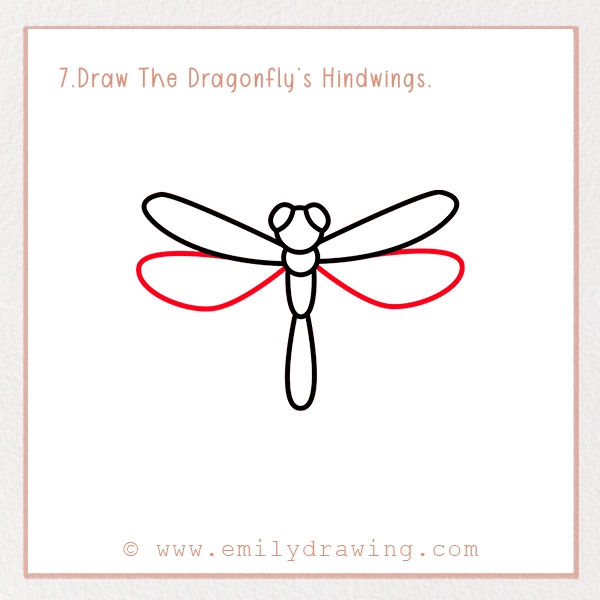
The seventh step is to draw the dragonfly’s hindwings, which you may consider the bottom wings. The hindwings are larger than the forewings, but the ability to move all wings independently allows dragonflies to quickly change the speed and direction as necessary.
Step 8 – Draw The Dragonfly’s Wing Veins
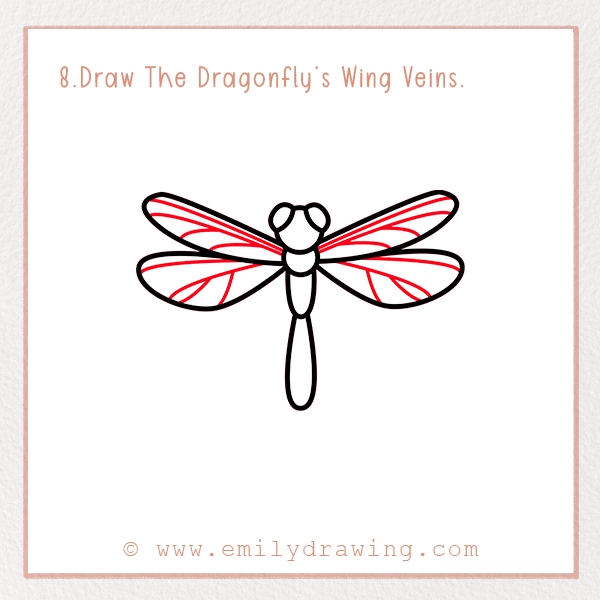
Next, you’ll draw the dragonfly’s wing veins. The veins look like patterned lines moving throughout the wings, but they’re more important than just adding extra details. Blood is moving through the wings, providing support, stability, and flexibility.
Step 9 – Color In Your Drawing!

Finally, it’s time to color in your drawing of a dragonfly. We wanted to capture the jewel-like appearance of this gorgeous insect, so we did a green-blue gradient style scheme. We used yellow for the eyes and light gray for the wings, as well as black for the veins and other details. You can choose another color scheme, solid or gradient, if preferred. Don’t forget to color the background of your picture as well. We want you to have fun drawing and coloring your butterfly.
Pin it now, Draw later!
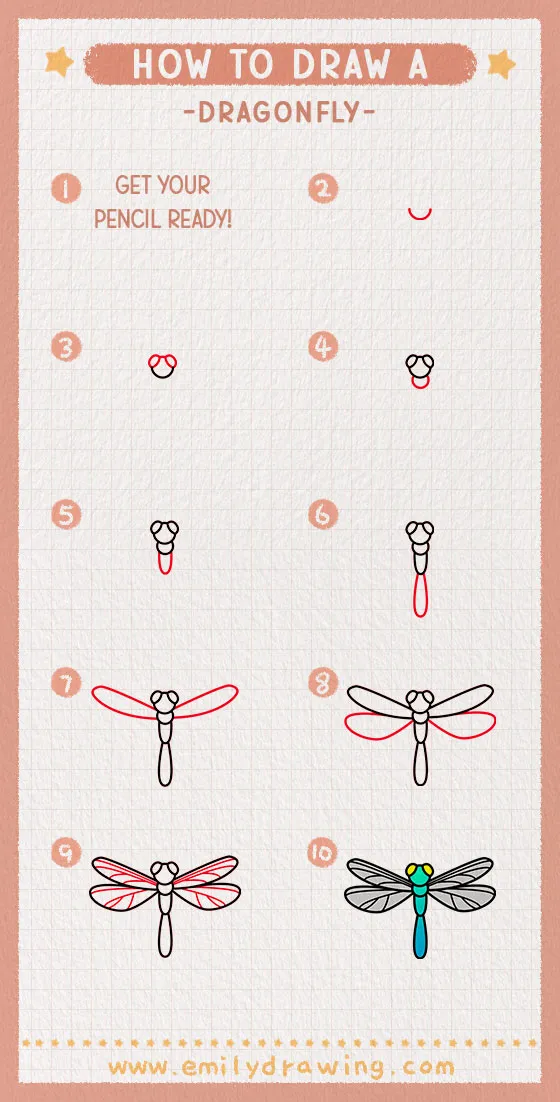
Interesting Facts About The Dragonfly
Dragonflies are found on every continent except Antarctica. They’re common in tropical regions, but some species can live in temperate regions.
These insects live near clean, fresh water, including rivers, ponds, lakes, and wetlands. You can even attract dragonflies by providing a water fixture, such as a fountain or pool, with water that’s 2 feet deep.
In addition, dragonflies need warm, sheltered areas away from the water’s edge. For example, they can find shelter in bushes or trees. They also prefer feeding and roosting areas near their breeding spots.
Did You Know?
- Dragonflies can move up to speeds of 35 miles per hour, and they can fly in any direction. Additionally, these insects can hover in mid-air.
- Their big compound eyes take up most of their head, but the eyes’ size and lenses provide panoramic vision. They can find prey up to 12 meters away.
- Dragonflies are carnivores, with a diet that consists of insects, tadpoles, and fish. The insects they eat include biting flies and mosquitoes.
- While dragonflies have sharp mandibles, they don’t have stingers. Dragonflies are not usually aggressive and don’t attack people.
- An adult dragonfly usually lives for 1 or 2 weeks, but some dragonflies live as long as 8 weeks.
We hope you had fun with our “How To Draw A Dragonfly” tutorial. We would love to see your drawings, which you can share on social media with #EmilyDrawing! If you’re interested in drawing other interesting insects or animals, browse the tutorials on our site. We offer a wide range of simple drawing tutorials.
